I learned to think about shared risk groups from two independent sources that intermingled within me: Dominic Barter and Charles Eisenstein. The term itself came from Dominic. In my memory, he was talking about “shared risk and prosperity” as a defining characteristic of a true community. I understood this a little bit, and it was a little bit abstract for me until I read Charles Eisenstein’s Sacred Economics, where, in one section, he approached the topic from a different angle which finally made it all click for me. Charles’ comment was that in the past, our material needs were attended to in interaction with the people we were in close proximity and relationship with, which is what community meant. Now, on the other hand, the two have been separated from each other: we are in relationship with people to whom we are not bound in any material way, and we get our material needs met through interactions with people who are far away and whom we almost never get to know. Which means that communities, to whatever extent they still exist, are much weaker precisely because there is no material basis for them.
Although Dominic’s framing includes “shared prosperity,” in the experimentation with shared risk that I have been part of, I have not been called to it in the same way as the “shared risk” part called to me. I have a concern that the word prosperity is often used in ways that are entangled with attachment to material wellbeing. I want to remember that it’s the act of embracing the risk that creates the community: the willingness to be together in the possible and likely hard times. Beyond that, I want us to re-learn to surrender to trusting life, releasing any possible attachment to doing well materially as what pulls us together.
The first actual experience I had with any of this was in 2019, when Emma Quayle, Erin Selover, and I went to a remote place in the desert for a month. There is nothing like a true and literal physical reality from which we cannot exit to drive home the power of a no-exit situation: in a very visceral way, we had to work out whatever came up, because we shared everything and couldn’t go away. There is nothing at that place, no amenities, no electricity, nowhere to buy anything. Weather conditions kept us in the valley whether we wanted to or not. We slept in the same tent, ate the same food, all of which we brought with us, and had the same nowhere to go every day. And we depended on the generosity of others who happened to be there for anything that we needed and didn’t happen to bring with us. I know at the cellular level that all three of us are transformed forever by this experience and simply can’t go back to life within mainstream capitalist society.
All community experiments I have been involved with since then, which are about 20, have been informed by what we learned in the desert: about shared risk and no exit, about how essential it is for agreements to be specific enough to hold us so that we don’t immediately revert to patriarchal patterns when challenges arise, and about rigorous impact sharing as a way of learning. I wrote about that experience and what we learned from it here.
Capitalism and “no exit”
Before going much further, I want to speak of the difference between “no exit” and “trap”. No exit is organic and part of life, born of the reality of being social animals. We all need each other for our basic survival, and we are all oriented, initially and biologically, to care for each other as we emerge from the most vulnerable and dependent, as well as longest early life experiences of all mammals. Over time, conditions of oppression that have been with us since patriarchy and have accelerated since capitalism have shifted our species from just about all of us living in no exit situations to most of us living in trapped situations and some few of us having the privilege of exiting. This happened first gradually as patriarchy entrenched itself more and more over the so-called Middles Ages, and then in an accelerated way through colonization, the enslavement of Africans, the land enclosures, and the witch hunts. On the material plane, now the vast majority of people on the planet are disconnected from their ancestral ways of being, struggling to keep themselves fed and sheltered when foraging is mostly impossible, subsistence economy is intruded upon by powerful forces of globalization, most “jobs” provide little by way of meaning, dignity, or basic sustainability, and actual communities are just about gone from the global north. This helps me truly grasp the appeal of capitalism, both systemically and through narratives.
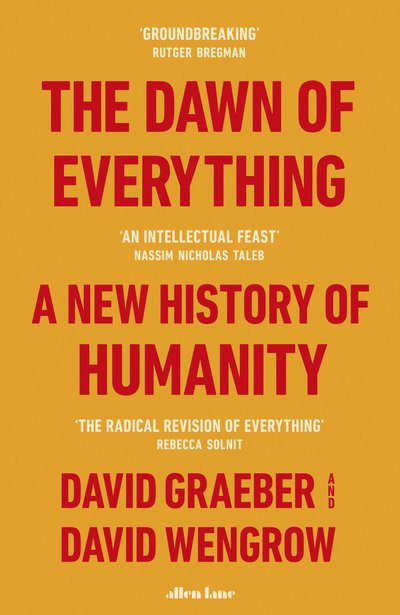
The narratives surrounding capitalism paint everything else as worse or impossible. We are told that we romanticize earlier life, and that what we have is the best possibility, especially given “human nature” (read: selfishness and competition for scarce resources). We are told that the only other option to capitalism is centralized planning, which is entirely coercive. We are given partial information about how rough the lives of people in those “Middle Ages” were, even though a material analysis, such as the one done by David Graeber, indicates that the fall of empires around the 6th century improved the lot of people in Europe and in Asia. The combination leaves just about everyone wanting to exit from the trap by having money as a ticket for freedom.
Especially in urban settings, we are so torn from land and from each other that many don’t even recognize the need for community. Community, and being part of groups more generally, is scary to many in the US. Fierce independence, self-sufficiency, and relying on buying things rather than being in relationships to attend to needs is just about self-evident to many. I sense that it’s less so in Europe, and still largely so. In many other places people still have a sense of community and have stronger bonds of mutual aid and relationships within community. And, still, the allure of money and the freedom it spells is a global trance.
This, I believe, is part of why so many communities don’t thrive: they come together based on shared interest and not based on shared risk. Such communities have too many exit options to create the crucible within which the deep transformation that realigning with life requires can happen. This is why living within capitalism and internalizing its narratives about autonomy present immense challenges to the possibility of many more people embracing shared risk. Until we are fully able to see “no exit” as radically different from “trap”, until we feel the gift of increased capacity that tying ourselves to each other brings, and until we have lots of tenderness for all the internalized challenges that we bring to this path, the full potential of experimenting with shared risk which we touched on in our desert time isn’t likely to burst forth even in communities that take it on such as the Nonviolent Global Liberation (NGL) community.
Understanding shared risk and no exit
Within a few months after the desert experience, the pandemic started. For a brief and shining moment, it seemed to me that an opportunity opened up for humanity, collectively, to re-learn about the commons, to see how our lives are all bound up with each other, to take in for real that we are really and essentially interdependent. This was what I wrote about in my Apart and Together 10-part series. It didn’t happen. The Coronavirus crisis didn’t, in my mind, create anything new. It only made more visible deeper realities that were easier to ignore until then. I am profoundly devastated that, globally, it didn’t bring us together, only further apart, to the point where some places, especially the US, are now in the red zone about the possibility of civil war, political collapse, or overt fascism. (I am saying this while wanting to acknowledge that in many places, and increasingly so, billions of people are already living within conditions of fascism and have been living under conditions of overt domination for a very long time. Also that the turn towards fascism has already taken a number of places in the last period, including Brazil, Hungary, India, Israel, Poland, Turkey.)
“When you can no longer turn back, anxiety falls away, because now there’s only one direction to travel: forward into the consequences of your choice”
(Oliver Burkeman , Four Thousand Weeks, p. 88)
Although the actual path taken, collectively, by humanity has been more of the same, I simultaneously see it as true that the need for something entirely different is more nakedly visible, and people, groups, organizations, and even people in positions of great power are searching. In this piece, I am aiming to speak to this need even while knowing that our collective capacity to envision something different is weak and the capacity to take steps in that direction is even weaker.
What does “shared risk” actually mean?
From the first versions of documents we created about what community agreements could look like, exiting the exchange paradigm and re-embracing the maternal gift economy, commoning, shared risk, and some version of no exit have been central to what those of us taking on these experiments have been doing.
After the desert, it took a while to come to see that maternal gift economy, shared risk, commoning, and no exit were elusive to articulate and none existed in an on/off version. For example, sharing income is different from sharing expenses and from sharing assets, and, within each, there are gradations and complexities. When the scope of the sharing is limited, sharing expenses may be easier than sharing income (think, even, of housemates sharing certain expenses). As the scope increases, it may become easier to share income than to share expenses, which would mean, in the ultimate, participating in the responsibility to care for distant ailing family members, financial liabilities incurred before shared decision making existed within a group, and all else that each of us carries with us as individuals.
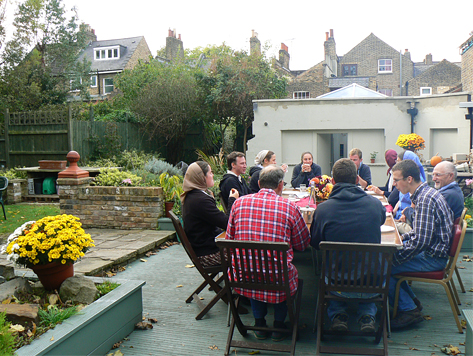
Full shared risk means that we make all decisions about resources and life choices together; that we are in full transparency about our decisions and resources in any part of everyone’s lives; that we share our expenses, our income, and our assets as well as our things, our work, and non-material resources; and that we have full access to all resources without any gatekeeping.
At present, at least in most of the global north, to the extent that shared risk exists, it happens within nuclear families, not within communities. Last fall, one of the learning packets I released, “Creating Relationships and Communities that Defy Patriarchy,” goes into considerable detail about what is entailed in the transition from the familiar, modern patriarchal groove to the radical experimentation in community that this way of living invites us into.
From early on within the vagabonding, shared risk has been a conscious choice for us, increasing and deepening as the depth of no exit grew simply through the circumstances of our living. Vagabonding is a tough way of living, while simultaneously being an exhilarating and liberating path out of attachments to the system as it is. After many community experiments, we are now living together with two more people – Eddy Quinn and Fox Keohane – and planning, along with Erin, a move into a physical, long-term living together on land that we aim to turn into a commons. As part of our preparation, we have weekly “shared risk” conversations: about money, decision making, sexuality, the relationship between the local and the global, and more. The learning curve is steep and exciting. Those of us already living together are learning, without exaggeration, all the time, from every decision that involves resources, and especially money, about shared risk, about no exit, and about the truly immense barriers to more and more people embracing this path.
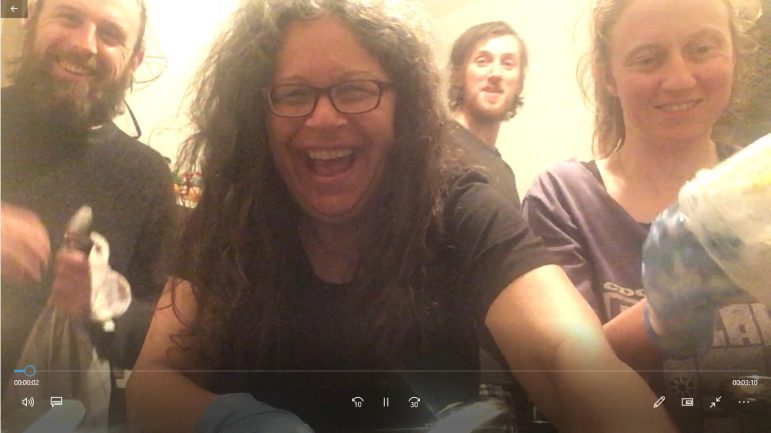
As incomplete and challenging as our explorations are, I will take it any day, without any morsel of hesitation, over continuing for one second to participate in the autonomy, exit, separation, and exchange pathway that we are all so familiar with.
This is just as true about our small group experiments as it with NGL as a whole. We are well into our fifth year. We have enormous challenges on a daily basis. However much we aimed to create agreements that will sustain us aligned with where we are going, we didn’t even know enough about how rigorous the practices are to integrate any part of our vision into a reality. This is especially so in the area of experimenting with resource flow, which is where we have done the most detailed and intensive experiments. Personally, as the founder, I’ve experienced immense heartache and loss over these years seeing how far we all are from the picture I carry of what’s possible.
Even with all that, I am full of awe and gratitude beyond any words I could express. I have never seen or heard of so many people putting so much energy into something so vast as what we are trying to do within NGL, and doing it all, for years, without receiving hardly any money. Even as two thirds of the initial group of members left over the years, even as some of the work of the original teams was put on long pauses due to lack of capacity, we now have many more people engaged in the work than ever before. For various reasons, the pathway to becoming a full member is now on hold. Still, even without that option, people still step forward and offer themselves in all kinds of ways. Something amazing and mysterious is unfolding within our experiment.
Through all that has happened, especially in recent times as I have been reflecting deeply on it and writing about it within NGL (this post is edited from parts of those reflections), it has become deeply clear to me that binding ourselves to each other much more than up until now will be essential for the full potential of what we are doing within NGL to express itself. We are touching and sensing a real practical possibility of something so vastly beyond what we were told is possible. I think this is something we all sense. I can’t explain any other way why so many of us persist in the face of the immense challenges we are facing.
Giving form to shared risk in the world as it is
At present, we have an extraordinary and unique opportunity for a leap in capacity and learning. BayNVC, the organization I had co-founded in 2002 and which has been fiscally sponsoring NGL, is closing at the end of the year. Although initially BayNVC offered to NGL to take over the non-profit status that BayNVC has within the US, multiple considerations about both purpose and capacity have led to that not happening. NGL is now facing the immense challenge of finding its own path to create forms and agreements that will more fully express the maternal gift economy principles we have been working with in a world that is fully based on exchange.
Initially, I saw this as a logistical nightmare and wasn’t looking forward to any of it. After some magical conversations, I see the work lying ahead as a major experiment with creating the shifts we want to support humanity in making rather than just a technical maze. Following Gandhi’s title of his autobiography, we call such endeavors “experiments with truth.” The particular one here lies at the heart of one of NGL’s core principles that have guided the work from the start: “Maintaining the generative tension inherent in focusing on both radical vision and practical applicability makes our work relevant rather than simply idealistic.”
On the most basic level, NGL is facing the need to create new structures that don’t seem to exist anywhere. In fact, I recently learned that even something as simple and basic as a worker-owned cooperative is not legal in some states in the US, especially Southern states, where worker coops are associated with the Civil Rights movement! We have here an astonishing opportunity, precisely by virtue of being global and radical, to contribute to the semi-invisible movement of restoring the commons. As we figure out how to function, we also learn on behalf of the whole and possibly open new pathways. One of our members, Selene Aswell, is going to be on a panel speaking at the UN in the coming weeks, calling her speech “Reclaiming Gift-Flow through Mutual-Mothering in Community,” and she is planning to make an appeal to governments in this direction. Not that her speech will magically create a new legal option. It’s simply that I really see us as part of figuring this transition out for humanity, not just for us. There didn’t use to be B corporations in the US, for example, until people made it impossible for it not to become a legal entity. (The “B” stands for “benefit”, and such corporations are structured in such a way that they have a triple bottom line of people, planet, and profit. I personally don’t think B corporations are a path to a livable future, and that’s not the point: the point is that their appearance was in response to a need and to people making moves to have them.)
This transition we are facing holds the overarching question about how far we can go from exchange to gifting, from instrumental to purpose-based relationships, and from the state and the market to commoning, while still being able to function at all. This touches on a long list of questions that we will need to attend to, for which we don’t yet know the answers; precisely what makes it an experiment rather than walking down a trodden path. Here are just a few examples:
- How do we interact with entities that operate fully within the exchange economy, including both large corporations such as Google and Zoom and individuals who offer us their work and are used to receiving money based on how much they have worked?
- How do we engage with current BayNVC staff in ways that care for them as human beings, are mindful of capacity limits everywhere, and are focused on purpose?
- How do we create pathways for people to give us money that are least tied to existing state and financial structures and that make it possible for us to do all we want to do?
- How do we frame what we are doing and why we are doing it this way to people who may want to fund our work on a larger scale? This may well include within it going deeply into challenging current paradigms of philanthropy and offering a coherent framework about deaccumulation as a substitute for philanthropy. This would be an important pathway for people with wealth who are in a lot of disquiet about what is happening, who know the system is broken, and who are hungry for an alternate vision.
- Who will be signers on whatever bank account or substitute of it we open for people to send us money, and why?
Increasing capacity for risk sharing
I have already said, and I want to say it again: risk sharing and no exit conditions aren’t new; it’s the ease of exit and the systemic instrumentality of relationships that is new. I also want to stress that the intensity of non-risk sharing embedded so deeply in much of the global north isn’t even the only model of market economy that exists! While writing this piece, I discovered a partial form of risk sharing that, to me, was extraordinary, though it may be very familiar to Muslim readers of this post. It’s in an article by Nabil Maghrebi and Abbas Mirakhor called “Risk Sharing and Shared Prosperity in Islamic Finance”.
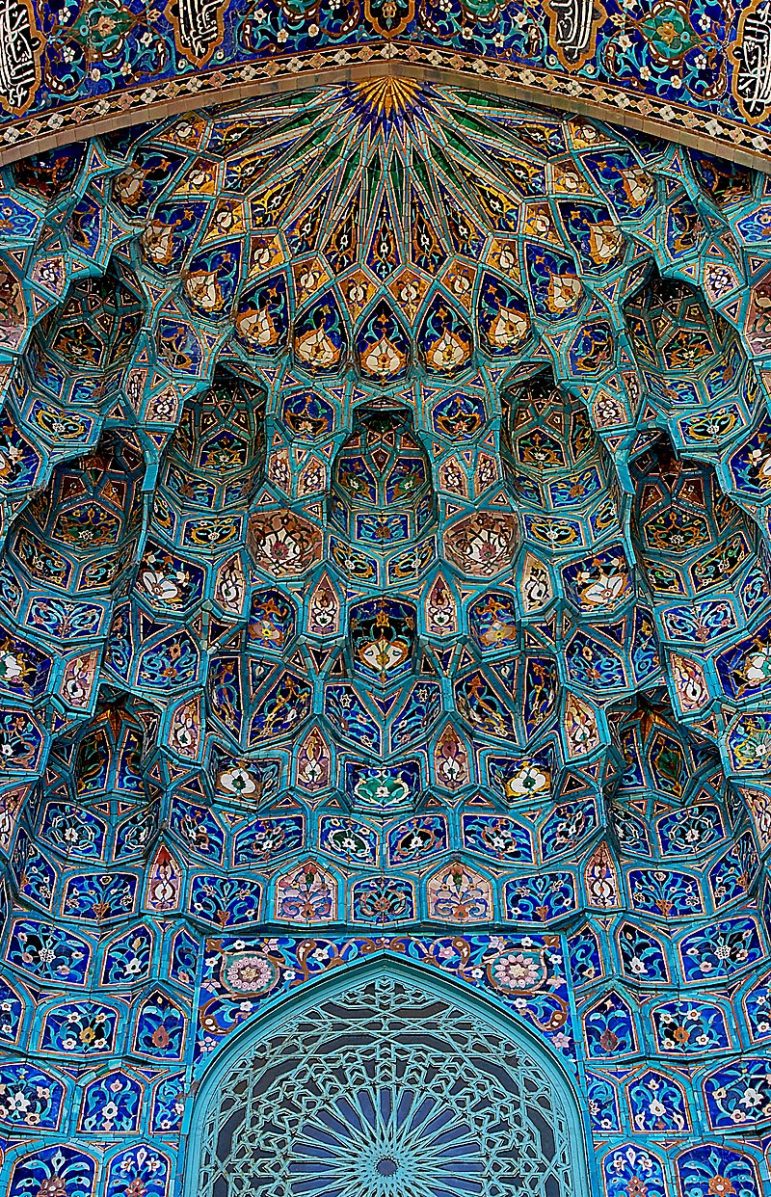
I had never taken in before how much debt-financing as it functions now is a process of what the article calls “risk transfer.” Even in the context of maintaining a commitment to exchange, markets, and economic growth, the authors describe a different way which I believe can have huge ramifications, well beyond what I am focusing on here. The relevant one-liner for me is the idea of “the allocation of risk [being] commensurate to the idiosyncratic abilities to bear losses.” In the terms I usually use, it means distributing risk based on capacity to absorb its impacts, something we do within NGL all the time. It gets so much closer to needs than to abstract rules, that I just want to cry: about what is happening in the world, about the many innovations that Arabs and Islam brought to the world and are made invisible, and about the gap between even this and the fullness of shared risk that is so essential to caring for everyone.
How do we even begin?
Here are the tiny bits I think I already know, followed by the many questions we all need to learn about together when we start experimenting.
Removing the illusion of security
Many people are reluctant to let go of exchange-based relationships because of fear that they won’t receive money if they do. I don’t actually believe we can ever know that we will receive money anywhere, from anyone. Imagining that we can have actual security is an illusion on which patriarchy has built a lot of oppression, starting from the raw deal of socialization. Even the most stable of jobs can disappear overnight, as many more people than I can bear to imagine have lost jobs of even 20 or 30 years in an instant because this or that CEO decided to change course. Anyone who works directly with clients and customers and isn’t part of a larger organization faces those risks more starkly. Everyone who joins NGL and brings into it any part of their own sustainability needs, inevitably and by conscious choice, accepts those risks while directing energy to NGL within capacity, however we each assess our capacity. This can be done, even if imperfectly.
Opening to seeing more needs, impacts, and resources
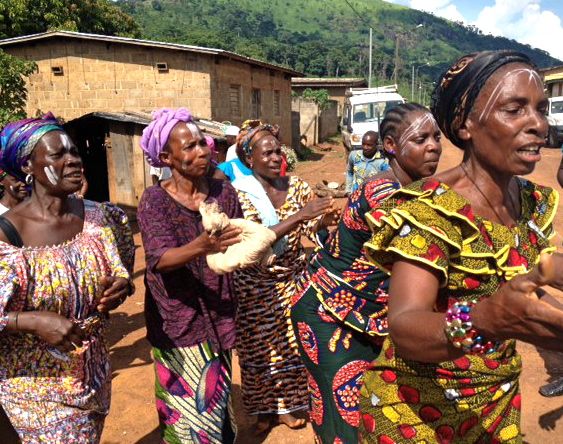
Another part of the illusion is the exchange-based economy trains us to think of decisions about money as being made between the two parties to the transaction. The needs of anyone else, the impacts on anyone or anything else, and any other existing resources remain fully outside the equation. This is a big part of how it’s possible for decent human beings to create so much harm: systemically, functioning in two-way-only transactions shields us from seeing what else is going on. When more needs, impacts, and resources are known to each other while making decisions, it ties us together and makes it less possible to not see. It’s not just that the totality of requests relative to overall available resources influences how much each of the requestors can receive. It’s also that knowing the totality of requests influences each requestor’s choice about how much they are going to take to themselves knowing the impact on others. This is where I see the genius of Dominic Barter in coming up with the “Money Pile” (part from explorations within the parallel experiments he’s been engaged in with others in Barzil and which they call “Financial Co-Responsibility”). Money piles, as we understood them, are the form from which we developed significant parts of our own experiments. It is a form that makes it nearly impossible to function in two-way relationships, because each person’s actions and decisions affect everyone else in a direct and visible way.
Asking many questions
There is no end to what we need to learn, both through thinking and through living into the experiments we engage in, always with others. No experimenting alone creates shared risk. Here are some of the questions we are still grappling with after some years of experimenting:
- What does it really mean to uncouple giving from receiving? What happens when someone works only one hour a year and brings their full sustainability needs into the mix (obviously an unlikely possibility, and still important to look at end points to see dilemmas)? What happens when some people bring in lots of money and others don’t bring any though they do all kinds of work, within the group or facing outwards, that doesn’t bring in money?
- What does it really mean for someone to be “in” the shared risk experiment? What’s to prevent someone from leaving when they don’t like how we do something? What’s to prevent a majority from sending someone out of the group if they don’t like how that person functions?
- How do we create the conditions for “no exit” so that in addition to being emotionally, morally, or spiritually committed to each other we are also materially bound to each other?
- Emerging from millennia (collectively) and decades (individually) of coercion often means that when we begin to smell freedom, we rebel rather than orient towards care for the whole. How do we then ever mobilize enough willingness and capacity to attend to enough needs to function, when no one tells anyone what to do and no punishments or rewards exist?
- When we distribute resources based on needs, how do we account for different habits and felt needs about levels of consumption? What can help anyone discern what are “true” needs and what are needs that are more conditioned? What to do so that no one is forced, even by shame, to consume less than is within their capacity?
- To what extent do we take on others’ commitments to others outside our shared risk group? If a mother or friend is sick or needs political asylum, how does this influence everyone else?
- How do differences of social location, including class, influence the way we share resources? What can we do so that those who are habituated to consuming less and doing more work are tracked and loved into changing their habits, and those who are habituated to working less and consuming more are lovingly invited to shift towards prioritizing others’ needs?
- How do shared risk pods relate to each other so that there is flow between pods, and so that this flow begins to counter the incessant flow of resources from the global south to the global north?
The grand experiment
We live in conditions of scarcity, separation, and powerlessness, and we are all affected. Now, even before the pandemic, more of us know this is not working. This is likely why a majority of people from 28 countries said in a survey that capitalism was doing more harm than good.
It’s a major journey to create these shifts. We don’t know how to ask for money, from each other or from others beyond our close relationships. We don’t even always know how to receive money. And we don’t know how to find pathways for unconditional generosity. Many of us find it exceedingly difficult to fully uncouple giving from receiving, maybe don’t fully grasp and take in what that would even feel like to live in the uncoupling. We have shame about having money and shame about needing money…
And I still hold out a sense of possibility. Both within NGL and way beyond, what I am imagining is actual shared risk pods sprouting, both ones made of people living physically together such as our pod, and others made of people figuring out the complex and globally necessary challenge of creating shared risk pods across physical distances. I am envisioning this being honored and held as sacred reweaving, so that those who are doing it are well supported, emotionally, spiritually, and even materially, by those who may not have the capacity or willingness to engage in the actual experiments and yet fully hold them with active reverence.
What I am longing for is commitment, including the commitment to holding the “insanity” of trying rather than giving up and accepting what we have around us. When we have the commitment, we can work out the kinks, we can love each other as we experiment, we can weep together when we fail, and we can learn and learn and learn again.
PHOTO CREDITS
A meal at the Bruderhof in Peckham – by Grec man on wikimedia
The Pod washing dishes – personal communication
Inside of one of the portal in St-Petersburg mosque – by Canes on wikimedia
Women’s saving group – USAID/ Cote d’Ivoire, Andrea Halverson, on wikimedia